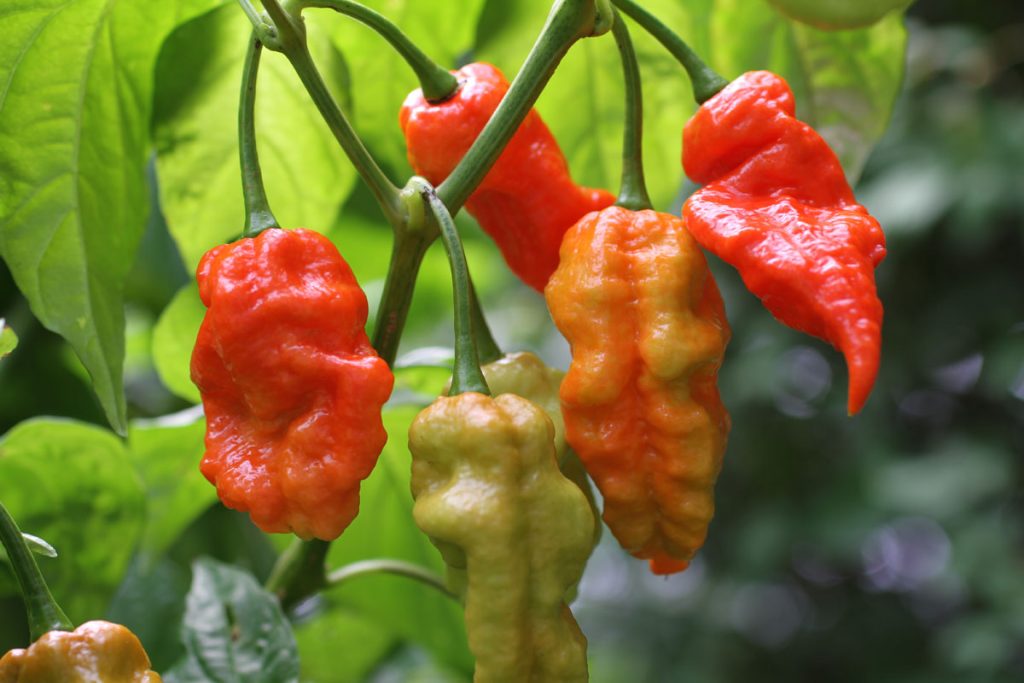
The Bhut Zolokia or Ghost Chilli, is an interspecific hybrid chilli pepper cultivated in the Indian states of Arunachal Pradesh, Assam, Nagaland and Manipur.
The Guinness World Records certified in 2007, that the ghost pepper was the world's hottest chili pepper, 400 times hotter than Tabasco sauce.
The chili is referred to differently in different regions. In Assam, it is widely known as Bhut Zolokia or Bih Zolokia. In some parts of Assam, this chilli is called Naga Zolokia, believed to be named after the ferocious Naga warriors inhabiting the plains and hills of Nagaland.
Bhut jolokia is used as a food and a spice, as well as a remedy to summer heat.
It is used in both fresh and dried forms, to not only spice curries, pickles and chutneys, but also to impart two distinct flavors to them. It is popularly used in combination with pork or dried or fermented fish.
Another use of this pepper is in northeastern India where they are smeared on fences or incorporated in smoke bombs as a safety precaution to keep wild elephants at a distance.
In 2009, scientists at India's Defence Research and Development Organisation (DRDO) announced plans to use the peppers in hand grenades, as a nonlethal way to flush out terrorists from their hideouts and to control rioters.
It will also be developed into pepper spray as a self-defence and anti-rape product.